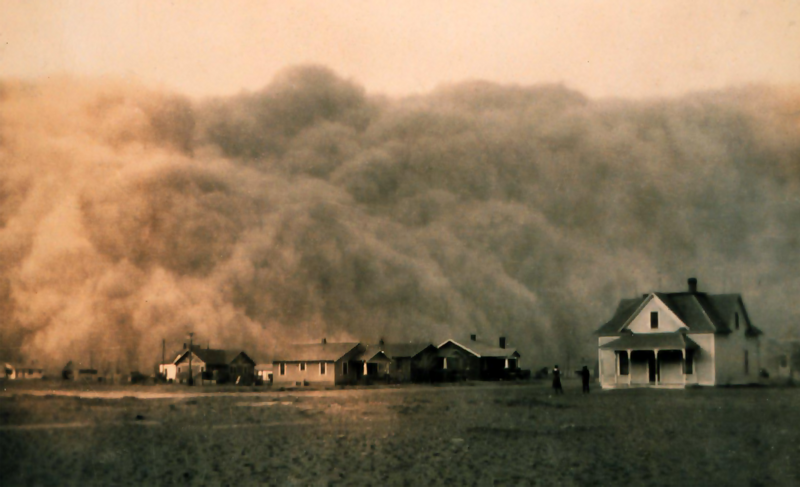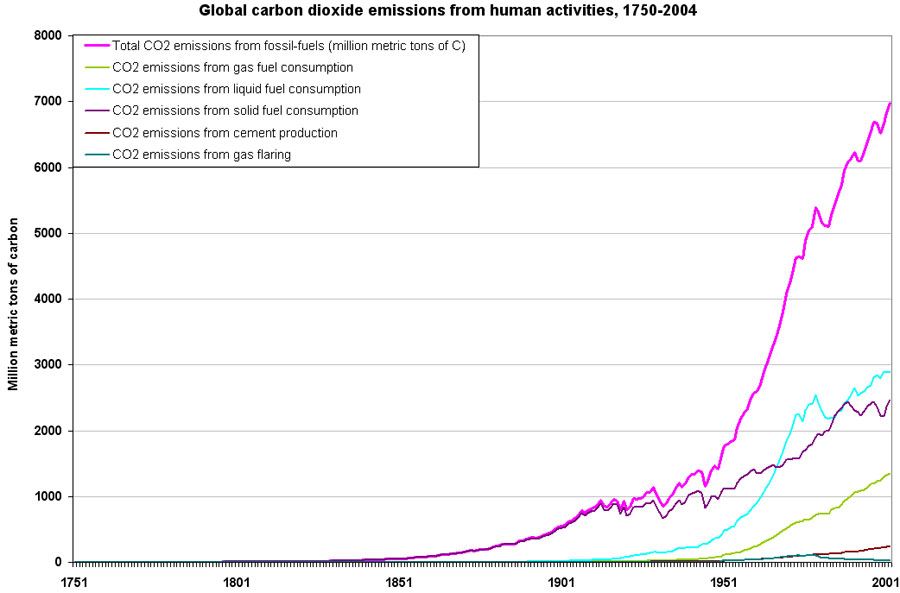 31 maart 2014, 14:25
31 maart 2014, 14:25
|
#1611
|
|
Secretaris-Generaal VN
Geregistreerd: 18 mei 2005
Locatie: Limburg
Berichten: 50.240
|

Citaat:
Oorspronkelijk geplaatst door Sjaax

Uit Knack:
Wat een flauwekul. Opwarming zorgt voor meer regen, dus voor meer vers water.
En ja, de regel van Goebbels doet nog altijd opgeld: 'Wanneer men liegt, dan moet het een grote leugen zijn, en deze moet worden volgehouden.'
|
De grote droogtejaren in de 30´s in de USA. 1934 moet extreem geweest zijn (klik op map 1934)
Citaat:
http://www.livinghistoryfarm.org/far.../water_01.html
Drought!
The economic depression of the 1930s was longer and harder than any other in American history because it was followed by one of the longest and hardest droughts on record. There are cycles of drought, but this was one of the worst ever recorded. The decade started with dry years in 1930 and 1931 especially in the East. Then, 1934 recorded extremely dry conditions over almost 80 percent of the United States. Extreme drought conditions returned in 1936, 1939 and 1940. Walter Schmitt calls this the "double whammy" of drought and depression.
The drought made the Depression worse, especially in the Great Plains. The "Great" Depression was a national and international disaster, but the Plains were hardest hit. In 1933, the average person living in North Dakota earned only $145 a year. That compared with a national average of $375, over twice as much.
With no rain, farmers couldn't grow any crops. No crops meant that the wind blew bare soil high in the air creating dust storms. School was canceled because of dust storms, not snowstorms. Some farmers, in trouble because of the bad economy, were forced to give up and move out of the plains looking for work.
|
http://shsgreatdepression.wikispaces.com/Dust+Bowl
 

En nog meer fotootjes:
Citaat:
http://en.wikipedia.org/wiki/Dust_Bowl


The Dust Bowl, also known as the Dirty Thirties, was a period of severe dust storms that greatly damaged the ecology and agriculture of the US and Canadian prairies during the 1930s; severe drought and a failure to apply dryland farming methods to prevent wind erosion (the Aeolian processes) caused the phenomenon.[1] Extensive deep plowing of the virgin topsoil of the Great Plains during the previous decade had displaced the native, deep-rooted grasses that normally trapped soil and moisture even during periods of drought and high winds. Rapid mechanization of farm implements, especially small gasoline tractors and widespread use of the combine harvester, significantly impacted decisions to convert arid grassland (much of which received no more than 10 inches (250 mm) of precipitation per year) to cultivated cropland.
During the drought of the 1930s, the unanchored soil turned to dust that the prevailing winds blew away in clouds that sometimes blackened the sky. These choking billows of dust – named "black blizzards" or "black rollers" – reached such East Coast cities as New York City and Washington, D.C. and often reduced visibility to a meter (about a yard) or less. Associated Press reporter Robert E. Geiger happened to be in Boise City, Oklahoma to witness the "Black Sunday" black blizzards of April 14, 1935; Edward Stanley, Kansas City news editor of the Associated Press coined the term "Dust Bowl" while rewriting Geiger's news story.[2][3]
The drought and erosion of the Dust Bowl affected 100,000,000 acres (400,000 km2) that centered on the panhandles of Texas and Oklahoma and touched adjacent sections of New Mexico, Colorado, and Kansas.[4]
The Dust Bowl forced tens of thousands of families to abandon their farms. Many of these families, who were often known as "Okies" because so many of them came from Oklahoma, migrated to California and other states to find that the Great Depression had rendered economic conditions there little better than those they had left. Author John Steinbeck wrote The Grapes of Wrath and Of Mice and Men about such people.
|
Dankzij meer (human) CO2 is dat nu voorbij. 

Totaal CO2 in 1930´s ~ 305 ppm versus 2010´s ~ 400 ppm ? :

Laatst gewijzigd door Micele : 31 maart 2014 om 14:46.
|

|

|